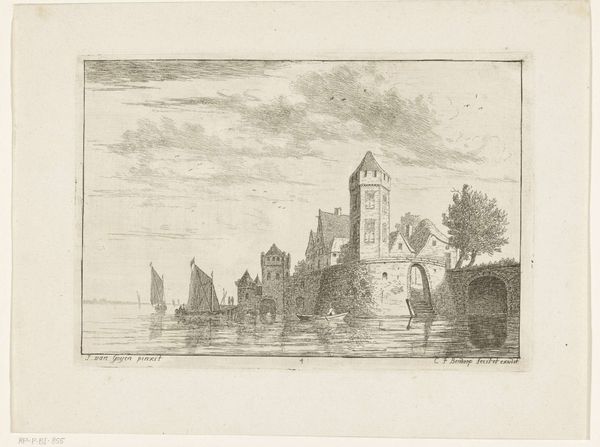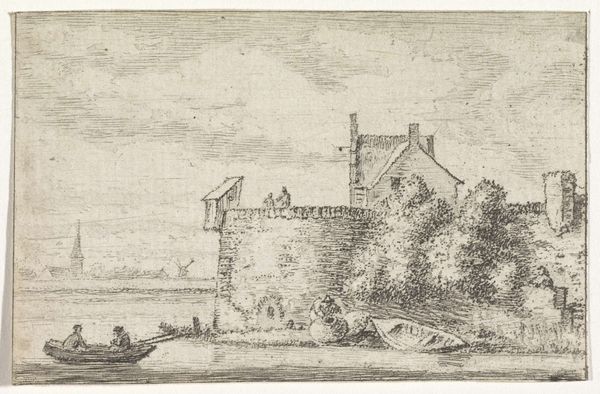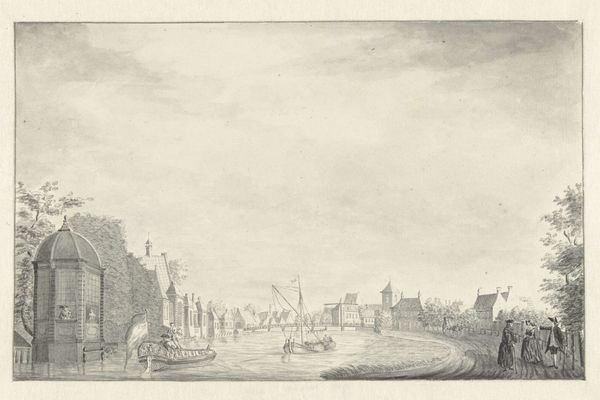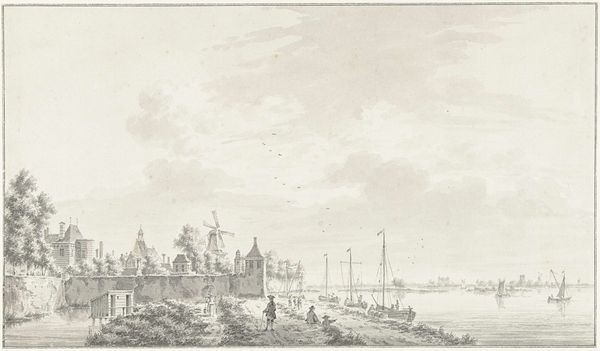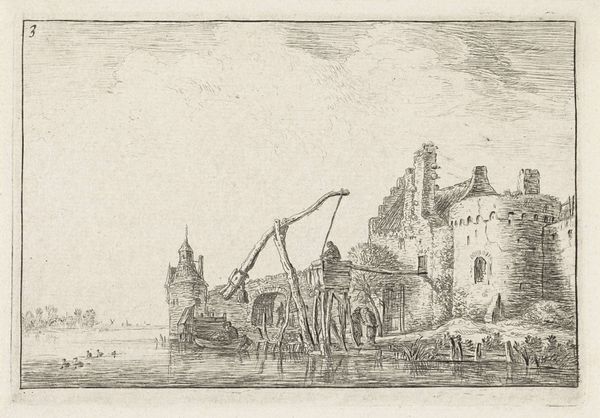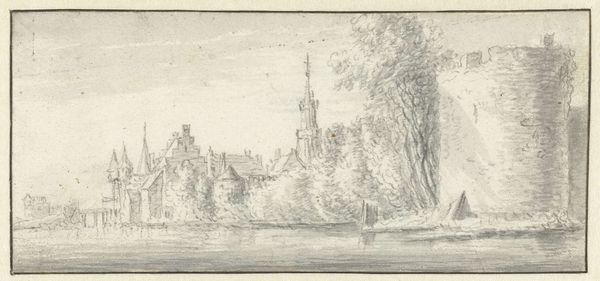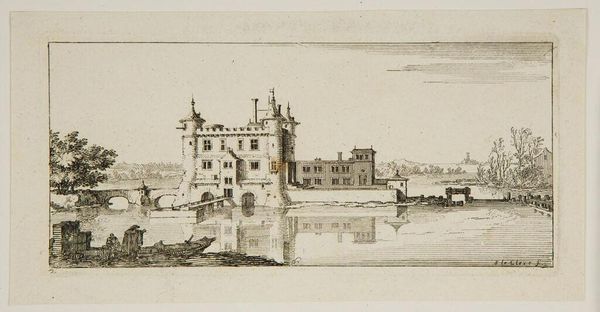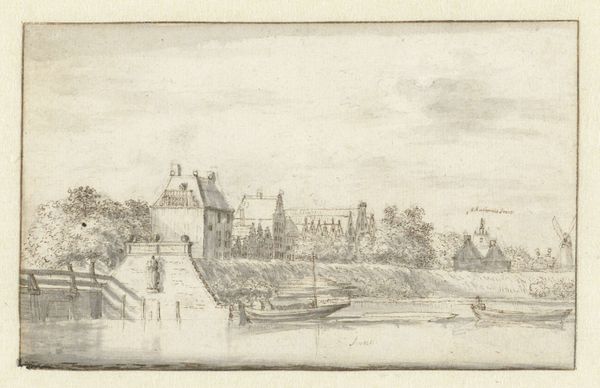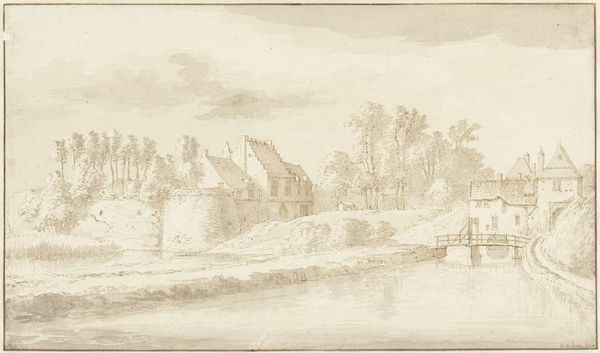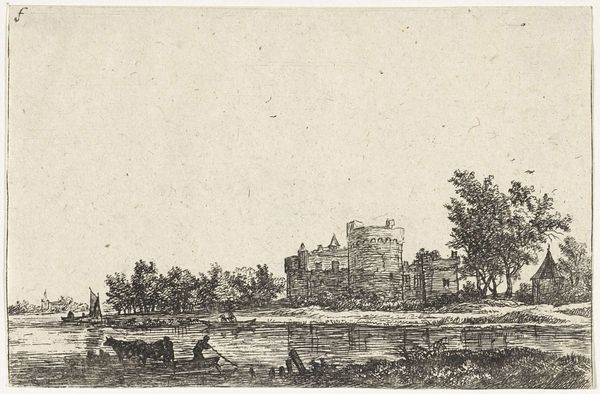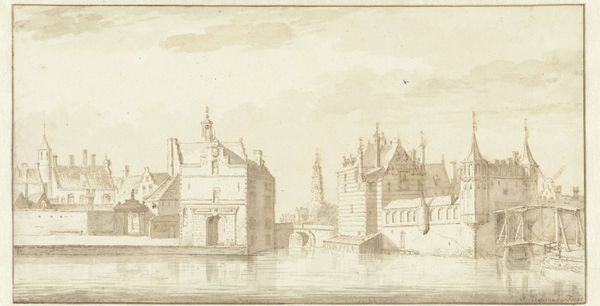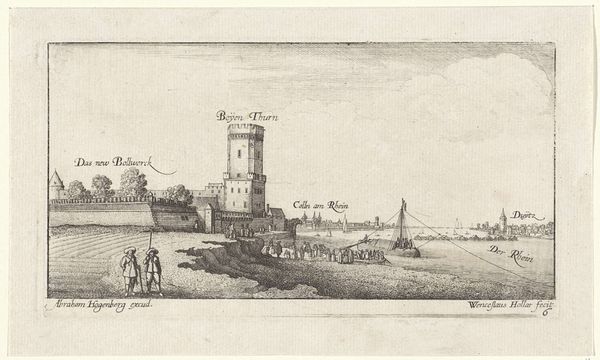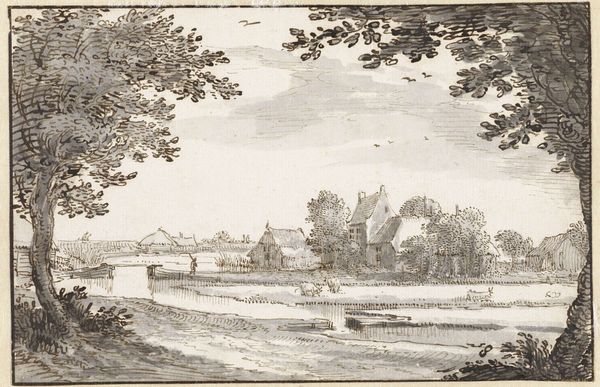
drawing, paper, pencil
#
drawing
#
dutch-golden-age
#
pencil sketch
#
landscape
#
paper
#
pencil
#
cityscape
#
history-painting
#
realism
Dimensions: height 170 mm, width 290 mm
Copyright: Rijks Museum: Open Domain
Curator: Here we have Aelbert Cuyp’s “View of Loevestein Castle," a pencil drawing on paper dating from around 1650. What catches your eye? Editor: A stillness. It's like looking into a memory, quiet and a little faded. The whole scene is steeped in a soft light, making the castle seem almost ethereal. Curator: Yes, Cuyp has really captured the serenity of the Dutch waterways. If you examine the composition, the castle sits squarely in the middle ground, framed by the water in the foreground and a pale sky above. It emphasizes the structure’s significance but also its integration with the landscape. Editor: Right, but look at those tiny figures dotted around the shoreline. They are fishing. There's such a beautiful, mundane realism at play, offering us a snapshot of 17th-century daily life in the Netherlands. Curator: Absolutely, there is this wonderful juxtaposition. While on the one hand the scene serves as a quasi history-painting—Loevestein being infamous as the prison of Hugo Grotius—Cuyp renders the whole scene as quite everyday. Editor: The precision of the architectural detail in the castle is remarkable, particularly given that he uses such humble materials as a pencil and paper. What’s even more surprising is the breadth of textures and details in the rest of the image – the shimmering quality of the water and so on. Curator: Cuyp's mastery lies in creating depth and light with minimal strokes. The subtle shading gives form to the castle, and the gentle reflections on the water create a sense of space. It is this restraint, paradoxically, that makes this small sketch so powerful. Editor: And makes it feel incredibly personal too, in a strange way. Not a grand statement, but a quiet, considered observation. The fact that we can peer so intimately into the world Cuyp once observed is wonderful to contemplate. Curator: I think that’s spot on; it encapsulates something elemental. These muted tones seem to say so much about our relationship with time, the world around us, and what the great Cuyp might have observed. Editor: It reminds me that the grand scope of history rests as much upon sweeping pronouncements as upon everyday impressions and humble moments.
Comments
rijksmuseum about 2 years ago
⋮
Albert Cuyp, Roghman’s senior by seven years, has here also depicted Loevestein Castle from a distance. In contrast to Roghman’s castle hidden from view by trees, Cuyp drew the gabled roof rising above the lowgrowing vegetation. The fishermen in the foreground lend the scene an anecdotal character.
Join the conversation
Join millions of artists and users on Artera today and experience the ultimate creative platform.
